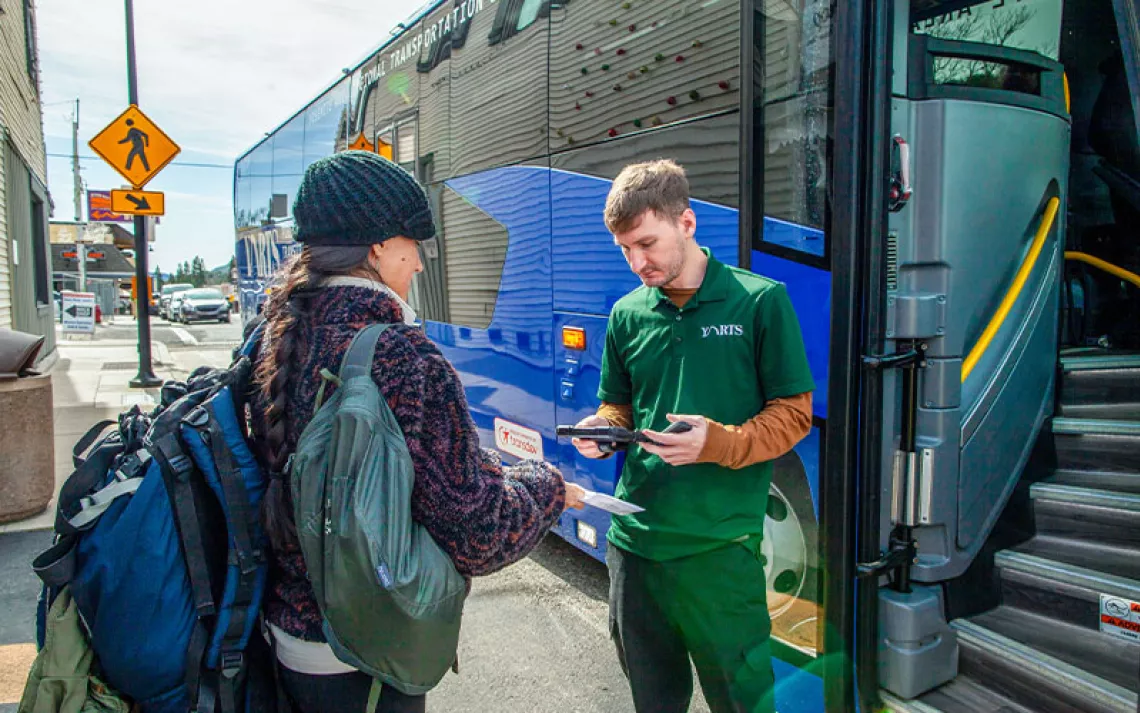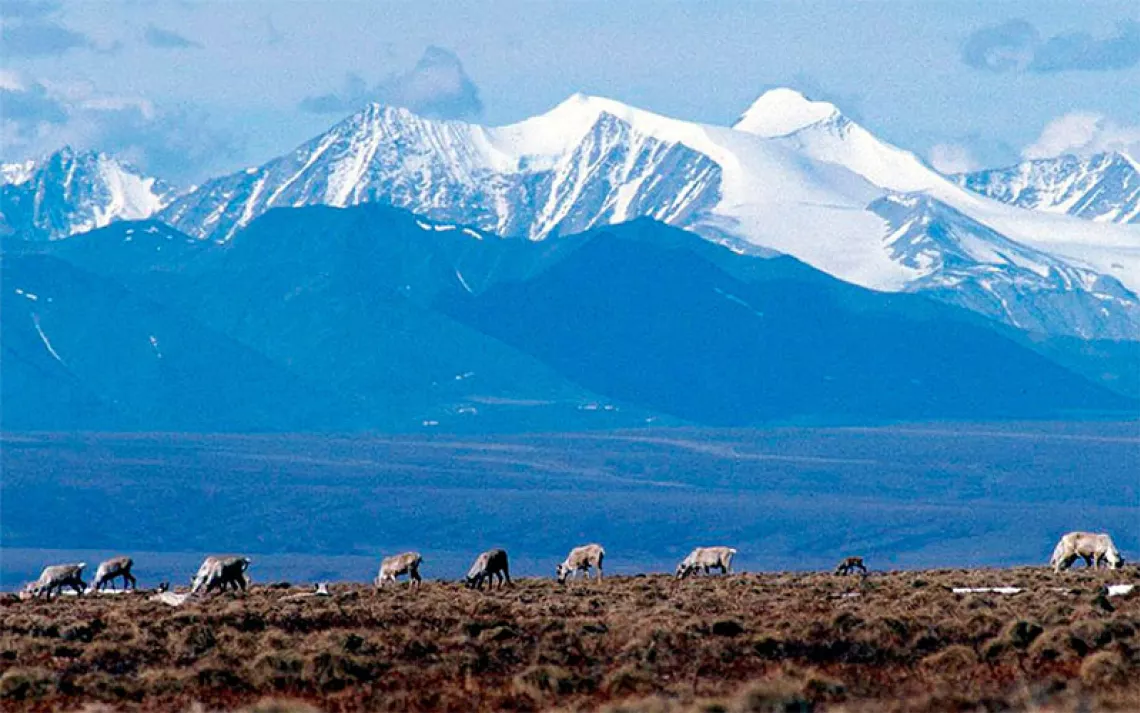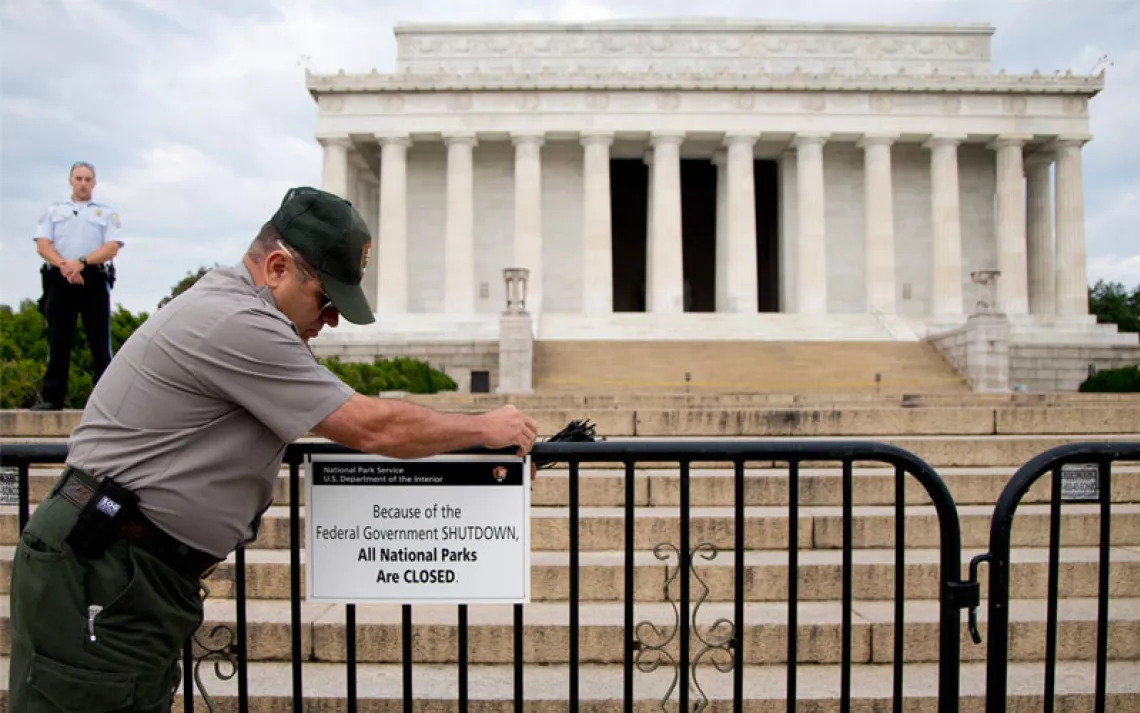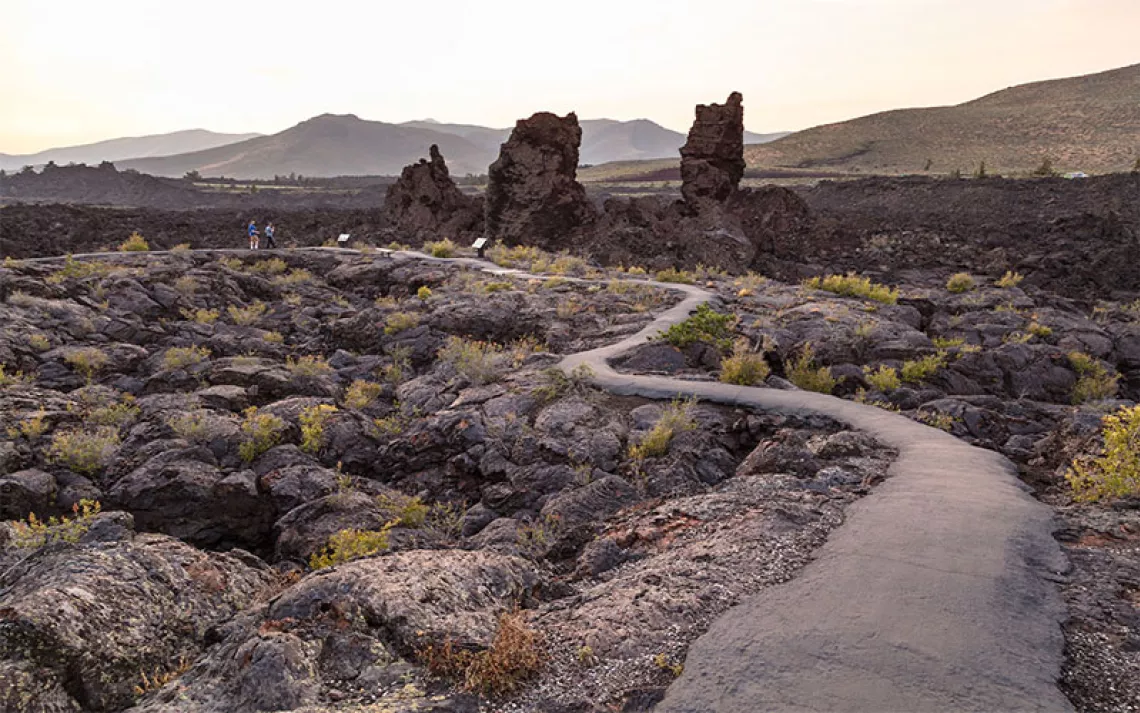Interior Department Backs Off Jacking Up Park Entrance Fees
Public outrage forces Ryan Zinke to reconsider
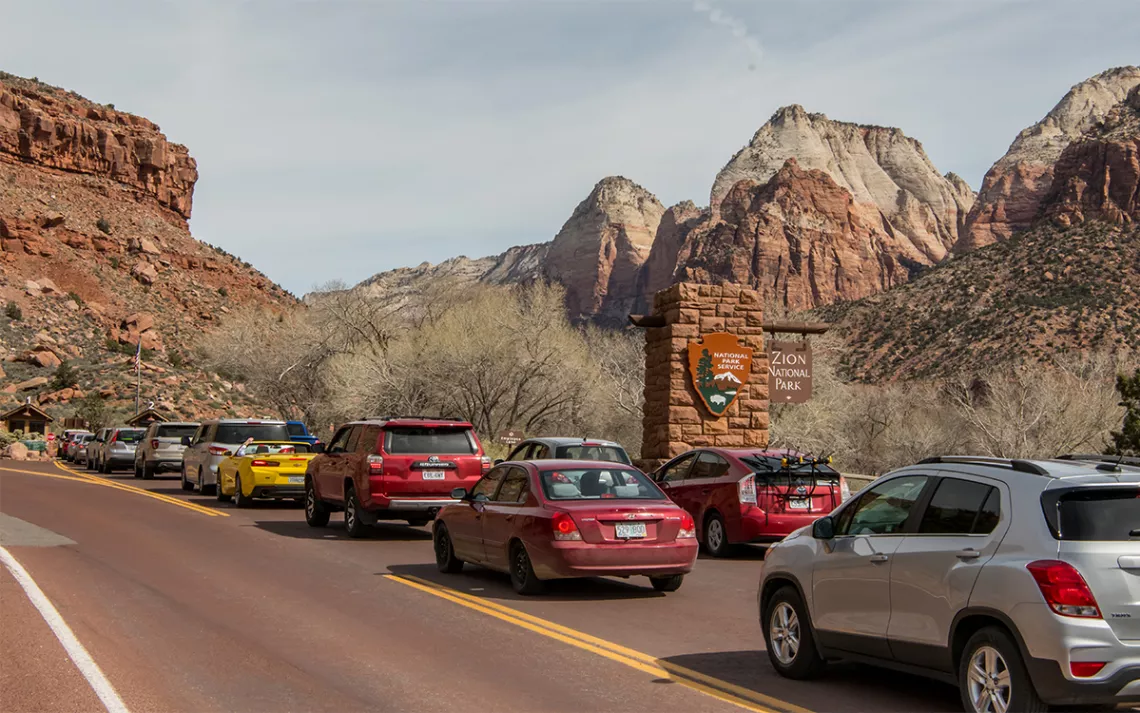
Photo by kellyvandellen/iStock
Officials at the Department of the Interior are reconsidering their plan to nearly triple entrance fees at the nation’s most popular national parks in order to address the maintenance backlog throughout the park system.
In October 2017, Interior Secretary Ryan Zinke proposed increasing basic peak-season vehicle entrance fees at the 17 most visited national parks from $25 to $70. Riding a motorcycle into the parks would have cost $50, and pedestrians and cyclists would pay $30. The fee increase, which was set to start in January at Joshua Tree National Park, would have been the largest since World War II. The Interior Department expected that the fee hike would raise $70 million to help address the backlog of maintenance issues for the parks’ deteriorating buildings, restrooms, and roads. (The parks require nearly $12 billion in annual repairs, but President Trump’s proposed budget cut Interior’s funding by 16 percent).
The plan met with an enormous outpouring of public comments -- around 109,000 according to a DOI spokesperson, nearly 98 percent of which decried the plan. Testifying at a Senate hearing in March, Zinke said that Interior was undecided about the rates and looking at various alternatives.
Now, an anonymous Interior official says that while some type of increase to fees will almost certainly happen, the dramatic hike initially proposed likely won’t. “We’re working to respond to those...thoughtful and well-put comments,” the official told the Washington Post. “Our ultimate goal when it comes to entrance fees is to make sure the parks get 80 percent of that revenue...but we also don’t want to put a burden on our visitors. We believe there is room to increase the fees and the annual passes.”
“The plan is still being reviewed and not yet finalized,” a DOI spokesperson added in an email to Sierra. “We've taken the public's suggestions seriously and have amended the plan to reflect those. The Secretary remains laser-focused on rebuilding our park infrastructure."
One of the main concerns about the fee increase was that it could dissuade low-income families from visiting the national parks. A survey conducted by the Outdoors Alliance for Kids showed that 64 percent of Americans would be less likely to visit a park if the fees were increased at the proposed rate. For households with incomes under $30,000, that number spiked to 71 percent.
“Most of the students we work with are in low-income, underserved communities,’” says Grace Lee, executive director of the National Park Trust. “We really want to make sure they have the opportunities to enjoy all of our parks and public lands.”
Opponents of the fee increase were also worried that it would reduce visitation and damage the economies of the “gateway communities” that rely on tourism to the national parks. A 2017 University of Montana study estimated that Yellowstone National Park’s gateway communities would lose $3.4 million if the higher park entrance fees had been implemented.
“Being the west entrance to Yellowstone National Park, the busiest entrance to the park, we would have anticipated a decrease in the number of visitors. Virtually our only industry is tourism,” says Marysue Costello, president and CEO of the West Yellowstone Chamber of Commerce. “But we certainly appreciate what the intent of those initial dollars was, and somehow that backlog of maintenance needs to be figured out.”
Interior is still mum on the revised rate structures being considered--Zinke and the Park Service’s interim director Dan Smith are said to be still discussing the issue--but some “modest adjustment” is still expected, possibly including a 10 percent fee increase for all fee-collecting parks, a $20 increase for the $80 annual and senior lifetime passes, an increase in the flat-rate charge for tour buses, or a per-passenger bus fee.
“National park fees play an important role in helping enhance the visitor experience through maintenance projects and other projects, but they have to remain affordable so that families can enjoy the parks,” says John Garder, senior director of budget and appropriations at the National Parks Conservation Association. “Some fee increases are appropriate. It’s appropriate to adjust fees according to the shifting value of the dollar.”
Last year, Democratic Senator Mark Warner and Republican Senator Rob Portman introduced the National Park Service Legacy Act, a bipartisan bill that would address the full maintenance backlog using royalties from current federal onshore and offshore energy production. Zinke recently backed a similar bipartisan bill, the National Park Restoration Act, that could collect up to $18 billion from energy production royalties (although the exact amount is necessarily speculative).
“The Park Service needs certainty as to how much they are going to get from year to year to they can plan multi-year projects,” Garder says. Nevertheless, he adds, “we commend the bipartisan members of Congress who have prioritized the park-service backlog.”
 The Magazine of The Sierra Club
The Magazine of The Sierra Club
